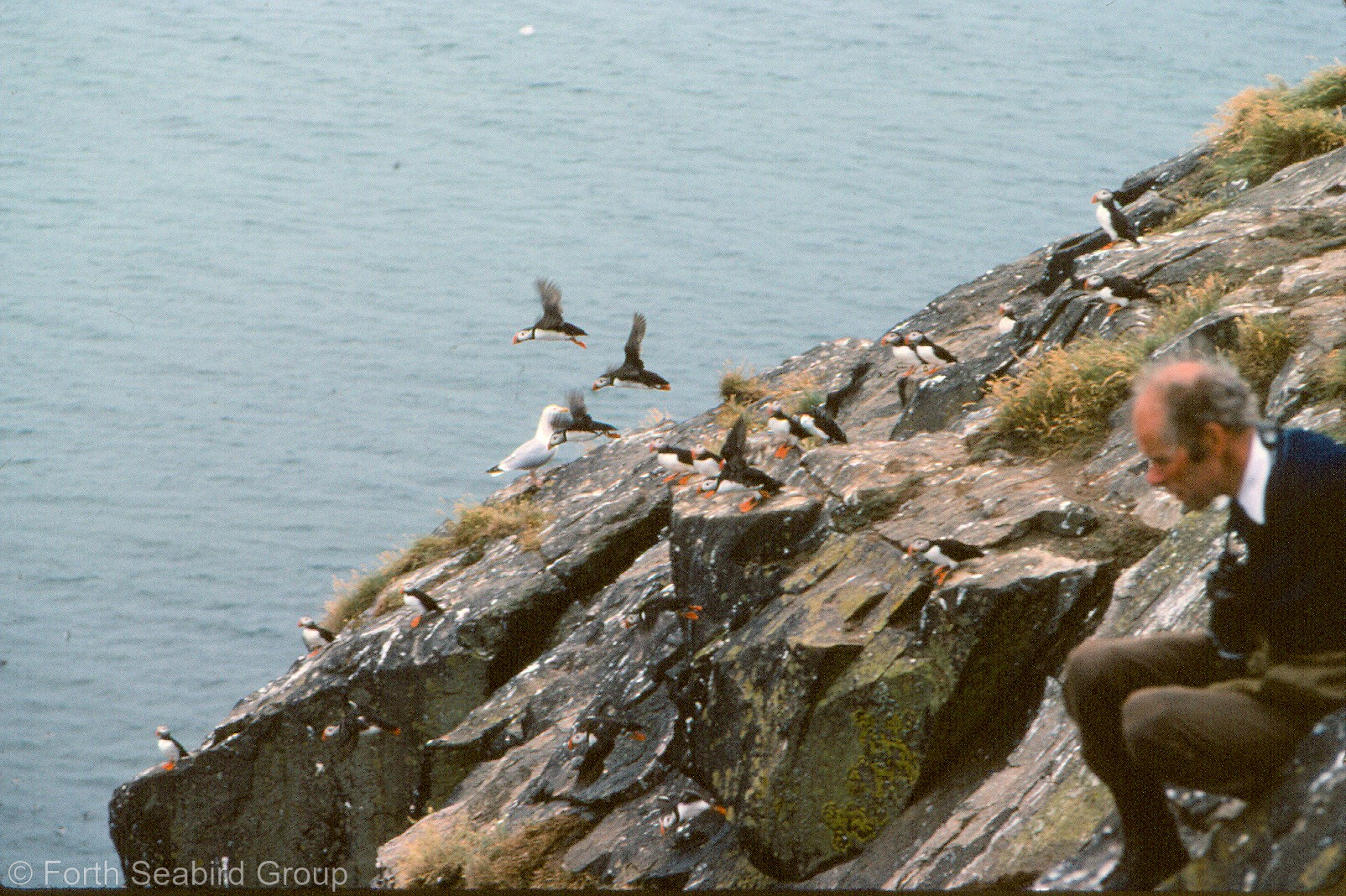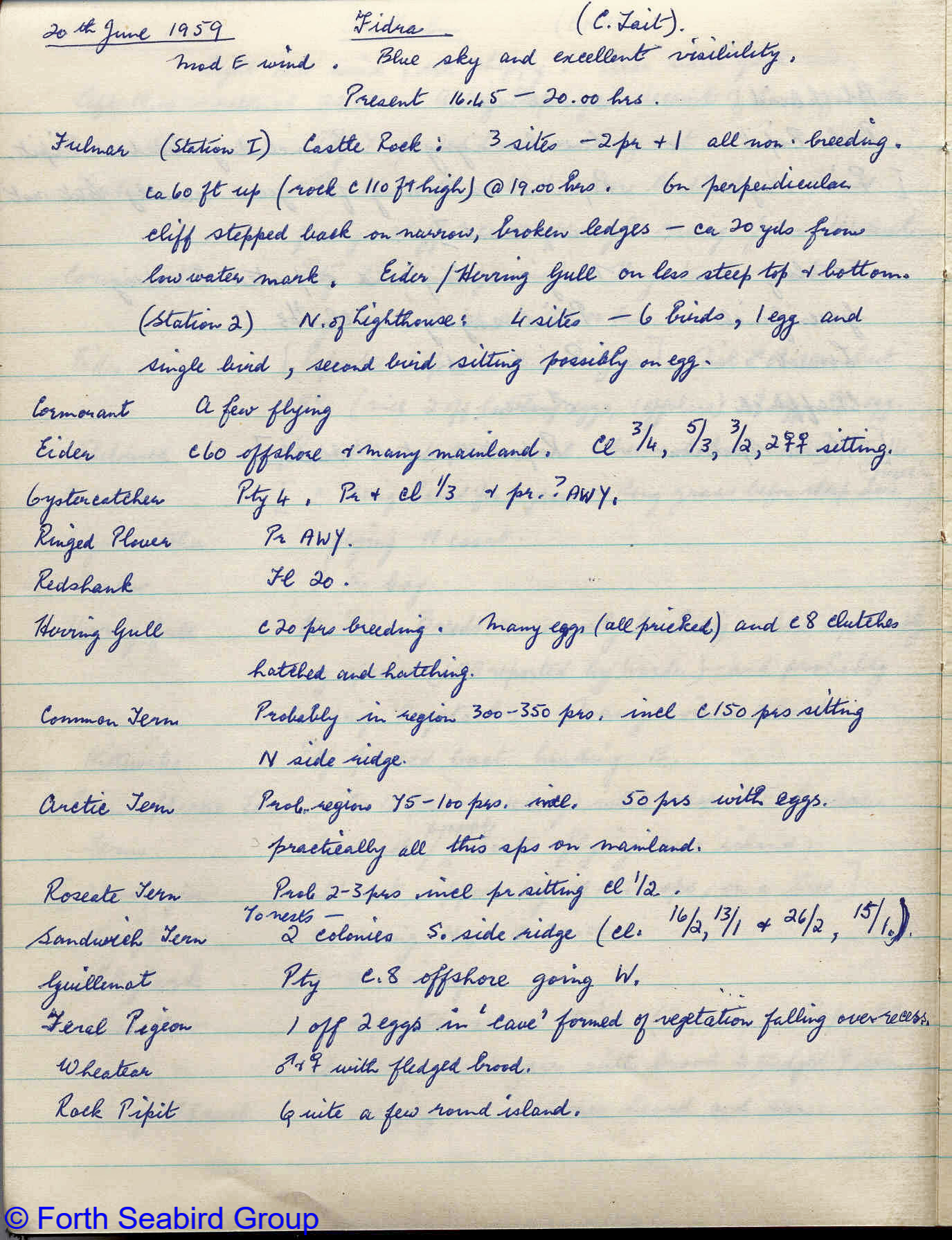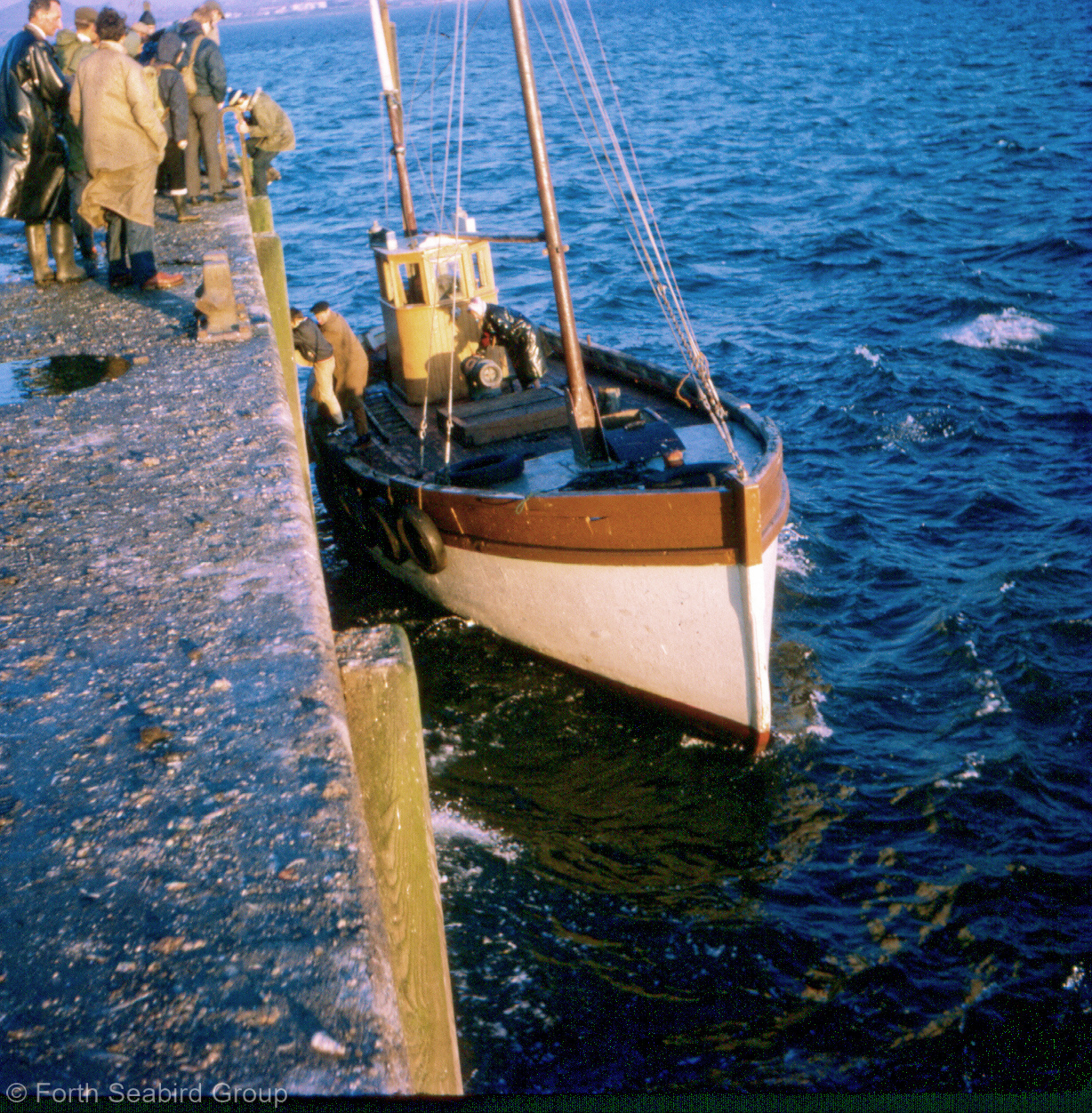


In the late 1950s, RWJ (Bob) Smith had discussions with other prominent Scottish ornithologists, including George Waterston. They were interested in what was happening with the seabirds breeding on the islands in the Firth of Forth.
” For many years these islands have excited our curiosity. This was stimulated by the report of Cormorants breeding on Lamb in 1957. The Kittiwake/Fulmar census of 1959 finally started off an annual visit to each island, under the auspices of the Edinburgh Natural History Society. Much of the counting has been done on an experimental basis with counters of widely differing experience. Nest counts are taken where possible but counts or estimates of adults have been made to give a rough indication where other techniques are difficult. ” RWJS
Bob carried out his first seabird count in 1959. In the following years he, aided by his wife Betty and with help from members of the Edinburgh Natural History Society (ENHS), made annual visits to Bass Rock, Craigleith, Fidra, the Lamb, Inchcolm, Inchkeith and Inchmickery to count the breeding seabirds. During these visits he was able to record the steady increase in numbers. He even witnessed some species breeding on some of the islands for the first time.
” The most exciting thing about our counts is that there are spectacular changes. The outstanding example is surely that of the Lamb. In 1955 the only breeding birds were 2 prs Shag, some Eider and lots of Herring Gulls. On our latest visit in 1965 the Shags had increased to 128 prs. Newcomers were Cormorant with 177 nests, 116 nests of Kittiwake, 4 prs Razorbills, at least 20 prs Guillemot, 1 pr Fulmar and several prs of Lesser Black Back Gull. The reasons for this increase are uncertain but possibly some of it is due to the lessening of human predation. Whatever the cause it will be of interest to follow events in the years to come. ” RWJS about 1965/66

” The most spectacular view on our island trips is from a low-lying promontory on Fidra through the superb, rock arch towards the mainland. On the north face of this arch the rock is sheer and was completely devoid of birds until 1964 when 2 prs of Kittiwakes bred. From past experience one might expect a steady increase here and this year we found at least 12 nests on this cliff. This is the third Kittiwake colonisation we have recorded in seven years. On our 1959 canoe trip there were 15 nests on the Lamb and this shot up to a peak of about 115 in 1963. Last year numbers were similar and, as the cliff is a small one, it is unlikely that there can be any further substantial increase. The first colony on the Inner Forth Islands was started in a small way in 1931 with one pair on the cliffs below the North Horn on Inchkeith. With 41 nests this year this colony appears to be doing very well. An interesting follow-on of these colonisations is that when the Kittiwakes have become established on a cliff, they appear to attract other species of seabird. This has happened on the Lamb and on Inchkeith and we may anticipate a further spread of the auks perhaps into Inner Forth. ” RWJS about 1965/66
For many years he would also make visits to the islands with members of the Young Ornithologists Club
to count the breeding gulls.
Over the years he would organise trips using many types of boats including a canoe, fishing boats,
tourist boats (eg Sula II), etc, and experience all sorts of sea conditions.
By the mid 1990s there were a number of other interested parties and these all came together to form
the Forth Seabird Group. The Group now included seabird counters and some members of Lothian Ringing
Group.
The Group continues to conduct the annual seabird counts and try to remain true to the methodology
that Bob developed and this is largely what was laid down in 1995 in the Seabird Monitoring Handbook
for Britain and Ireland. Although members of the Group come and go there is a healthy pool of
volunteers available to help each year. The Group has an almost unbroken record of annual counts
starting in 1959 right up to the present day. The one exception is 2020 when the restrictions imposed
by the government to help control the spread of the Covid-19 pandemic meant that no counts could be
carried out that year.
Seabird colonies are easily disturbed and if a brooding bird is flushed off its nest then an
opportunist gull will very quickly come in and devour the exposed eggs or chicks. Young chicks or
eggs hidden by vegetation are very vulnerable to being stood on. With all of this in mind, to keep
disturbance to a minimum, the Group only make a single visit to each island to carry out that year's
count.
 The Group prides itself in the quality and consistency of its surveys and this is echoed by NatureScot
who are one of the main users of the count data.
The Group prides itself in the quality and consistency of its surveys and this is echoed by NatureScot
who are one of the main users of the count data.
Over the years the seabird count trips have been funded in various ways. In the early days, and for
many years, the full cost was bourn by the volunteers taking part. Then for a number of years Fife
Council and Westminster Gravels Ltd provided funds which were used to subsidise the costs. Now the
Group are very grateful to NatureScot and RSPB whose funding fully covers the ever increasing cost of
hiring boats.
It should be noted that the Isle of May has its own dedicated teams of scientists from NatureScot
and UK Centre for Ecology and Hydrology. They kindly supply FSG with the results of their seabird
counts so that the FSG can show the wider picture covering the whole Firth of Forth.
And a final quote from Bob:
” The success of the counts is due entirely to the support of our members. Trips are not always uneventful. The moment of truth comes with the step from the heaving boat to the slippery rock and some of our members have surprised themselves by their rock-climbing activities. We look forward to more excitements and pleasure in the years ahead. ” RWJS
The current committee agree wholeheartedly with this. Without the enthusiastic support of our members,
who are all unpaid volunteers, we would not be able to achieve such good results during the annual
seabird counts and we thank them all for their help.
Where to find other information: